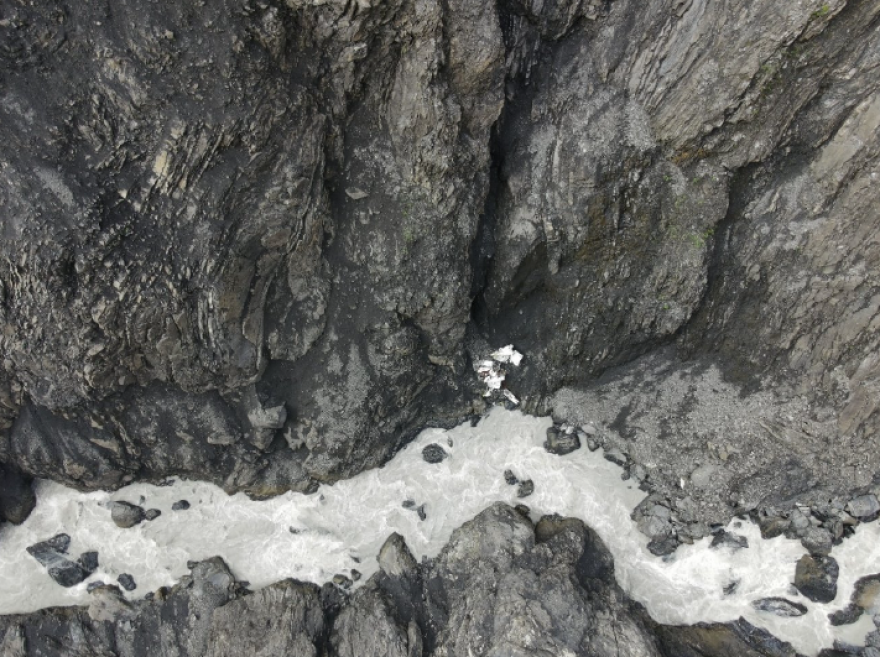Preliminary report outlines events leading up to Aug. 9 crash, but doesn’t address why aircraft went down
The National Transportation Safety Board released a preliminary report Monday on the crash earlier this month of a Piper PA-18 Super Cub that went down in a steep ravine in the southwest corner of Denali National Park and Preserve, killing the pilot and passenger.
“Today’s preliminary report does give a little more detail to the circumstances that led up to this tragic accident,” says Clint Johnson, the NTSB’s Alaska Region chief.

Johnson said Monday that the report doesn’t include information about why the plane crashed because park rangers said after several flights around the crash site that it’s too dangerous to attempt a descent into the steep ravine to recover the victims and enable investigators to examine the wreckage.
“We’re obviously at a disadvantage not being able to see and lay hands on the wreckage itself,” he said.
The report says the pilot, 45-year-old Jason Tucker of Wasilla, was operating the Super Cub for Willow Creek Aviation on a chartered fight to take two hunters to a sheep hunting area near the Dillinger River, just west of the Preserve.
“Two or three days before the accident, they departed Big Lake in the operator’s Cessna 206,” Johnson said. “They flew over the proposed hunting area, and then they returned back to Big Lake.”
Johnson says on the morning of the 9th, Tucker and the two hunters all flew out of Big Lake in the Cessna to Donkey Creek, about 15 miles south of the park near the Yentna River. And they dropped off their supplies and equipment there.
“The pilot then returned back to Big Lake (and) picked up the PA-18,” he said, “and the intent was to shuttle each one of the hunters and their gear into the hunting area using a smaller airplane,” he said.

Johnson says the crash occurred on the first leg of that return trip. The report says Tucker and 44-year-old Nicolas Blace, of Chugiak, both died of injuries they sustained.
An Alaska National Guard Rescue Coordination Center helicopter crew located the wreckage the next day at the foot of the ravine. Later that day, Alaska Wildlife Troopers rescued the stranded second hunter, who’s not identified in the report.
Johnson said the hunter told investigators about their plans and other information. But Johnson says they still have a lot of other gaps to fill.
“We still have a ways to go,” he said, “but there’s a lot of other things that we can do in the meantime.”
That includes further examining video of the crash site shot by an NTSB drone and collecting more weather data to show conditions in the area at the time of the crash. Johnson says the agency also is now asking other pilots for information.
“Somebody that was in the area on that day, August 9th, right around 12 o’clock, 12:15, that may have been flying in the area that can give us a little better idea as far as weather conditions.”
Johnson says a final report on the wreck likely won’t be completed until next August.



